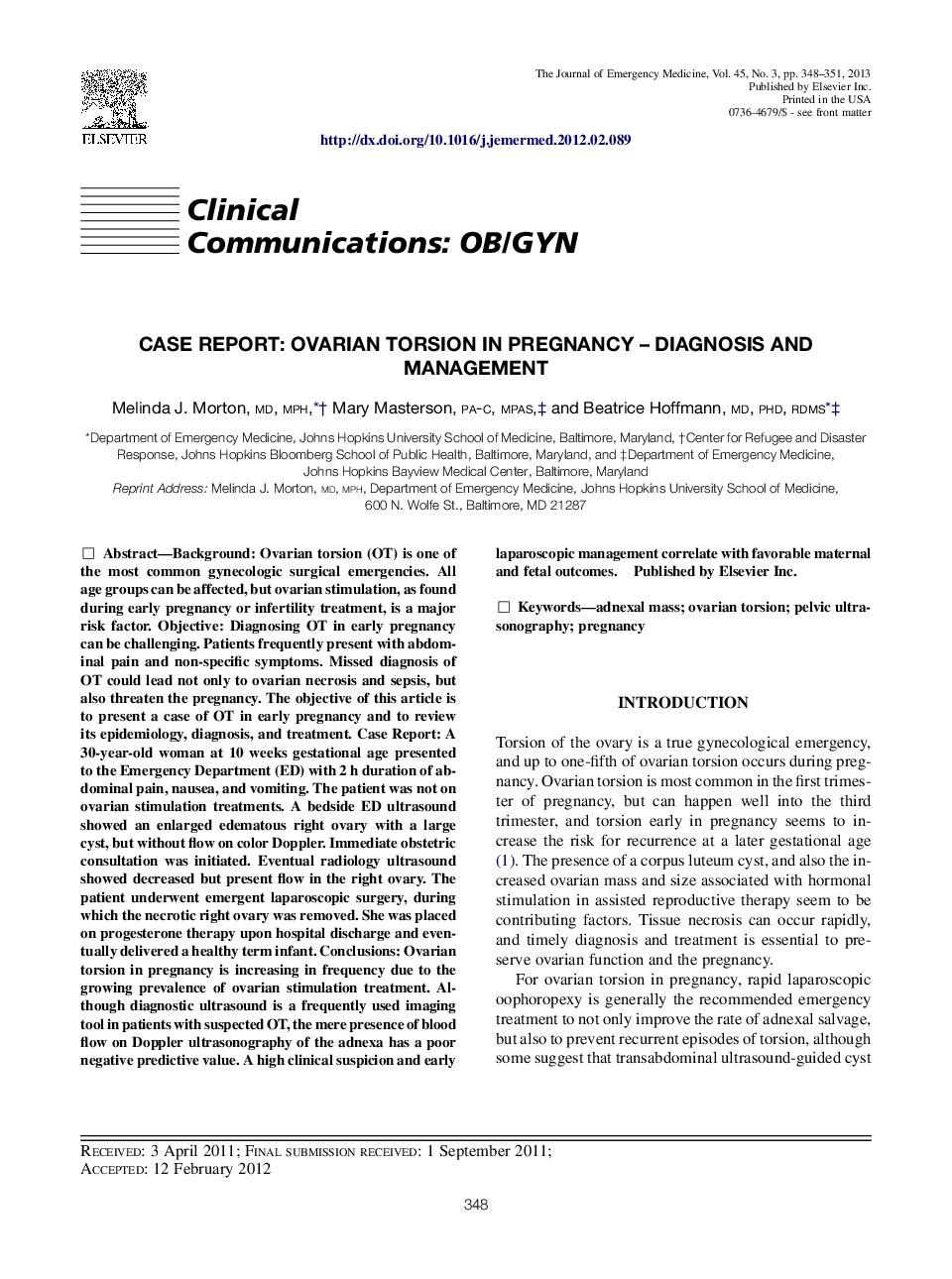| Article ID | Journal | Published Year | Pages | File Type |
|---|---|---|---|---|
| 6085462 | The Journal of Emergency Medicine | 2013 | 4 Pages |
BackgroundOvarian torsion (OT) is one of the most common gynecologic surgical emergencies. All age groups can be affected, but ovarian stimulation, as found during early pregnancy or infertility treatment, is a major risk factor.ObjectiveDiagnosing OT in early pregnancy can be challenging. Patients frequently present with abdominal pain and non-specific symptoms. Missed diagnosis of OT could lead not only to ovarian necrosis and sepsis, but also threaten the pregnancy. The objective of this article is to present a case of OT in early pregnancy and to review its epidemiology, diagnosis, and treatment.Case ReportA 30-year-old woman at 10 weeks gestational age presented to the Emergency Department (ED) with 2 h duration of abdominal pain, nausea, and vomiting. The patient was not on ovarian stimulation treatments. A bedside ED ultrasound showed an enlarged edematous right ovary with a large cyst, but without flow on color Doppler. Immediate obstetric consultation was initiated. Eventual radiology ultrasound showed decreased but present flow in the right ovary. The patient underwent emergent laparoscopic surgery, during which the necrotic right ovary was removed. She was placed on progesterone therapy upon hospital discharge and eventually delivered a healthy term infant.ConclusionsOvarian torsion in pregnancy is increasing in frequency due to the growing prevalence of ovarian stimulation treatment. Although diagnostic ultrasound is a frequently used imaging tool in patients with suspected OT, the mere presence of blood flow on Doppler ultrasonography of the adnexa has a poor negative predictive value. A high clinical suspicion and early laparoscopic management correlate with favorable maternal and fetal outcomes.
